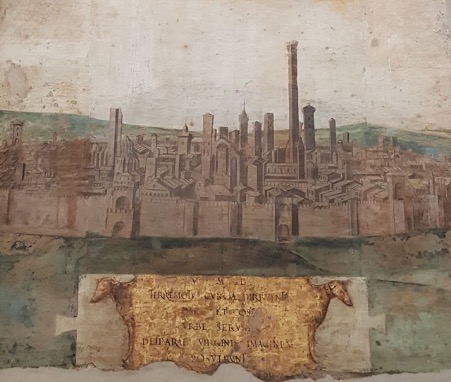At the beginning of the sixteenth century, the city of Bologna was devastated by a series of violent earthquakes that shocked its inhabitants and destroyed most of its monuments. An even more exceptional seismic period hit Ferrara between 1570 and 1574; while Rome was about to experience the worst flood of its history (1598). These events caused the dramatic loss of lives and devastating damage to built environments, leaving populations to face fundamental questions about how, what, and where to reconstruct.
Starting with the case of Bologna, this talk explores the impact of destruction on artistic production, the transformation of the urban space and its social perception. It will discuss material responses to disasters –prevention strategies, building techniques, the repurposing of ruins– while also considering the conceptual implications underlying the destruction of a historic city and its landmarks.
Saida Bondini is a postdoctoral fellow at the Kunsthistorisches Institut in Florenz. In 2021, she received her PhD from the Courtauld Institute of Art and the University of Lausanne. Her dissertation focused on the interplay between artistic production, social relationships, and the urban fabric of Bologna in the late fifteenth century. She has been the recipient of fellowships and internships from international institutions, including the Metropolitan Museum of Art, New York and the J. Paul Getty Museum, Los Angeles. Her current research, funded by the Swiss National Science Foundation, investigates the interdependence of natural disasters and art making in the sixteenth century.
Organised by Dr Guido Rebecchini (The Courtauld)






